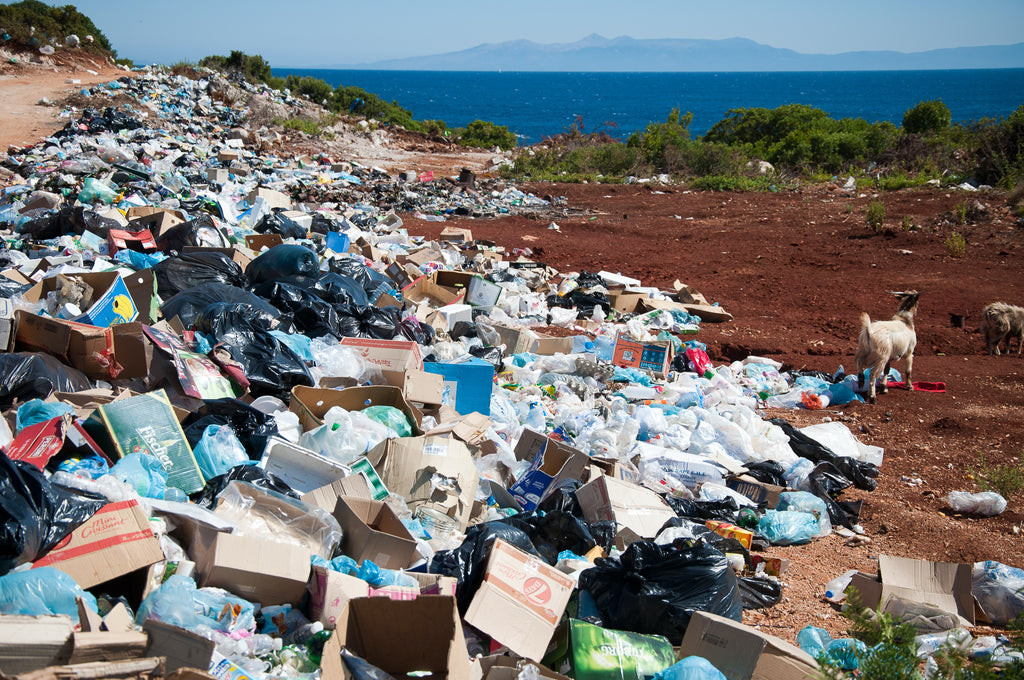Photo by Antoine GIRET on Unsplash
By Courtney Sturniolo
Creating plastic
Producing plastic consumes roughly 8% of global oil and gas production, with half of that creating plastic feedstock and the other half used in the manufacturing process.
Oil and natural gas are the building blocks of plastic. Drilling and fracking for these fossil fuels cause myriad environmental hazards. A shortlist includes groundwater contamination, spills, and leaks. A byproduct of extraction and processing is wastewater that must be stored. Contamination from extraction and wastewater results in pollution and illnesses, even cancer. Reducing our reliance on fossil fuels is imperative.
After extracting oil and gas, it is transported, cracked, and processed into plastic resins and pellets. These pellets are then sold to customers who produce plastic goods. The entire manufacturing process accounts for about 4% of oil and gas consumption and emits greenhouse gasses and carcinogens along the way.
Disposing of plastic
Annually, we dispose of 360 million tons of plastic a year. What actually happens to all of that waste?
Recycling seems like a great solution, but the reality is pretty grim. According to the US Environmental Protection Agency, only 8.4% of plastic is recycled, and it’s mostly plastic bottles. Even if you put other waste into your recycling bin, almost 70% of the plastic we consume in the US can’t be recycled cost-effectively and will be discarded in landfills or incinerators.
Plastic waste accounts for almost 20% of trash in landfills in the US, where it takes up to 1000 years to decompose because, surprisingly, landfills are designed to prevent waste from decomposing.
In the US, plastic waste accounts for 16% of incinerated trash. Burning plastic emits pollutants and carcinogens into the air.
An estimated 17.6 billion pounds of plastic waste ends up in oceans each year. You’ve probably seen a garbage patch before, but did you know they have identified 5 garbage islands? Plastics that end up in the ocean don’t biodegrade. They do break down into smaller pieces that are then ingested by fish. When we eat fish, we ingest their lifetime of microplastics.
Much of the larger plastic ends up in the stomachs of sea animals. It is estimated that 52% of sea turtles have ingested plastic debris. A sperm whale was found with 55lbs of plastic debris in its stomach. Seabirds, such as albatrosses, may even be attracted to plastic debris when feeding because plastics in the ocean eventually retain an odor that seabirds associate with prey.
The future of plastic
Reducing plastic use and minimizing single-use plastics are obvious goals, but in most cases, the use of plastic cannot be eliminated. So what should we do? A 2009 report on Plastics, the environment, and human health suggests, "The recycling message is simple; both industry and society need to regard end-of-life items, including plastics, as raw materials rather than waste." We couldn’t agree more ;)
Sugopetite’s eco-friendly clothing is made from post-consumer, single-use plastic and requires 70% less energy than manufacturing virgin plastic. Each dress recycles the equivalent of 30 water bottles into high-performance Chitosante fabric. It’s not just better for the environment – it’s better for you! Chitosante fabric is stretchy, soft, and breathable. It stays fresh and hygienic because it’s anti-bacterial and odor resistant. It’s travel-friendly, wrinkle-free, and pilling-resistant, so it can be machine washed and tumbled dry.
Knowing your beautiful clothes are contributing to the solution – not to the problem – lets you feel as good about your Sugopetite dress as you feel in it!



Leave a comment: